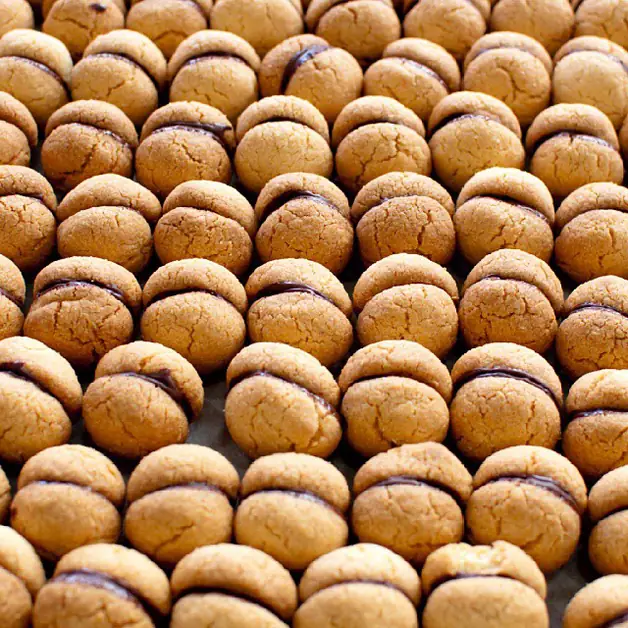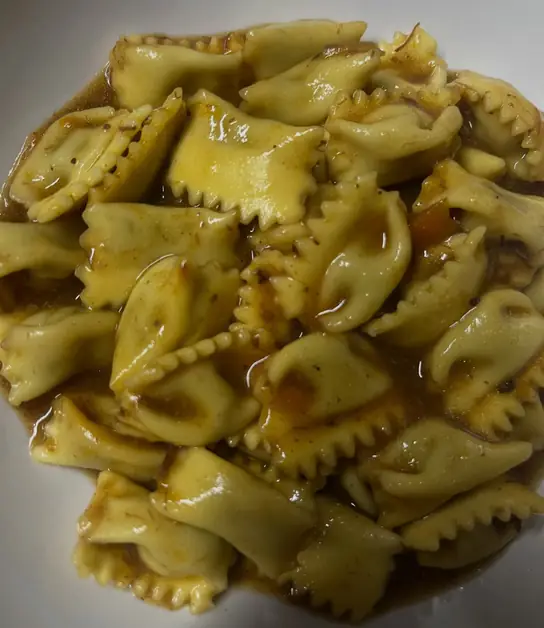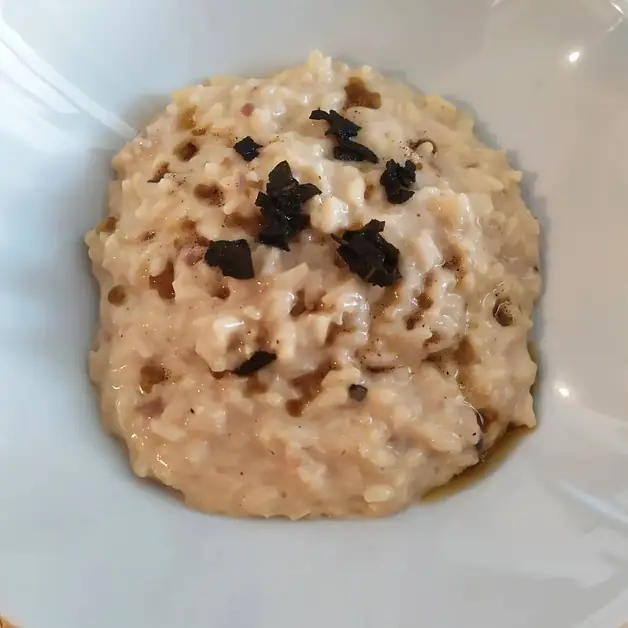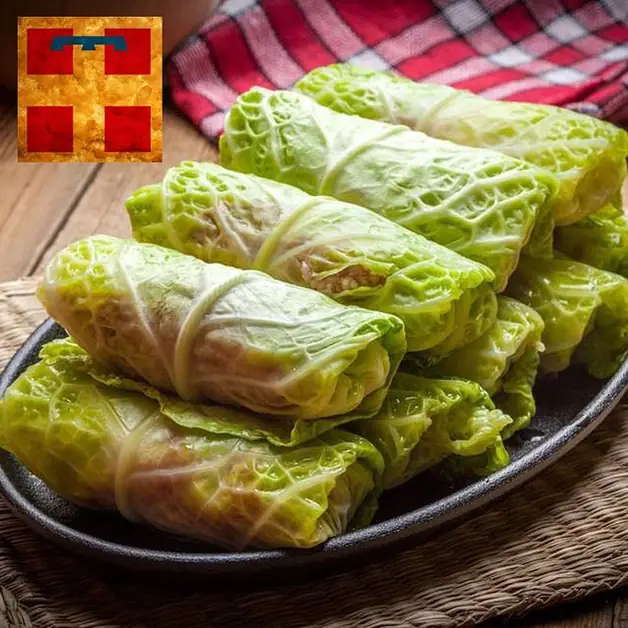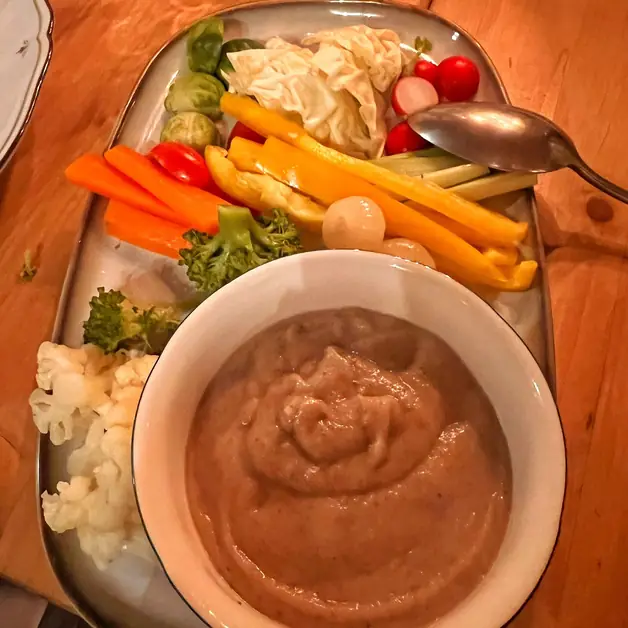Ingredients and secrets of Piedmontese mixed fry
Discover the ingredients and secrets of Piedmontese mixed fry.
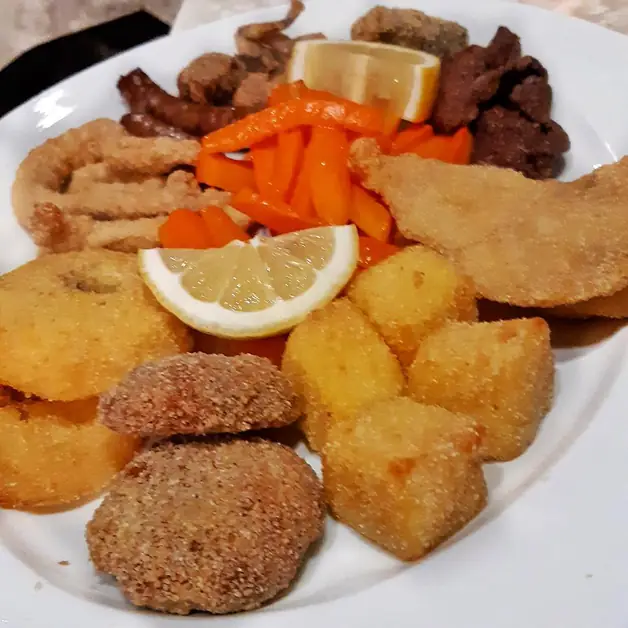
What are the ingredients of Piedmontese mixed fry?
The ingredients of mixed fry vary depending on the area and family habits, but generally include:
Veal offal: brain, liver, sweetbreads Pieces of meat: sausage, cutlet or meatballs Fruit: apple or banana Seasonal vegetables: artichokes, zucchini, green beans Fried sweets: amaretti, sweet semolina or fritters
All ingredients are breaded in a light batter or breadcrumbs and fried in hot oil until perfectly golden. The result is a complex dish, rich in aromas and textures, which best represents the creativity and generosity of Piedmontese cuisine.
What is the origin of Piedmontese mixed fry?
The origins of Piedmontese mixed fry date back to ancient times, when peasant families slaughtered animals at home. Nothing went to waste, and offal — such as liver, sweetbreads and brain — was cooked immediately, often fried, to be consumed fresh. Mixed fry was considered a festive dish, prepared after slaughter and served the following Sunday, often accompanied by blood pudding and sautéed vegetables.
How has the recipe evolved over time?
Over the centuries, the recipe for Piedmontese mixed fry has been enriched and transformed. To the original version, mainly composed of meats and offal, sweet ingredients such as apple and amaretto have been added. This contrast between sweet and savory has become the signature of the dish. In modern versions, mixed fry can include up to thirty different elements, including freshwater fish, potato croquettes or battered vegetables.
What does the combination of sweet and savory mean in mixed fry?
Piedmontese mixed fry is famous for its harmony between sweet and savory. This combination reflects the creativity of Piedmontese cuisine, where opposites balance in perfect harmony. The addition of apples, amaretti or sweet semolina alongside offal and vegetables creates a unique, rich and surprising tasting experience. It is a dish that tells the story of a cuisine that is not afraid to dare.
What are the variations of Piedmontese mixed fry?
Each area of Piedmont has its own version of mixed fry. In the Langhe, the dish tends to be richer in meats and offal, while in Monferrato and Cuneo more fruit and sweets are added. Some recipes also include lake fish, such as perch or trout. In gourmet restaurants, lighter versions can be found, where each ingredient is fried at a controlled temperature to achieve a crispy and light crust, with less oil and more balance.
How is traditional Piedmontese mixed fry prepared?
The preparation of mixed fry is long and requires attention, but the result is worth it. Here are the main steps:
1. Prepare the ingredients: cut the offal, meat and vegetables into small, even pieces. 2. Bread: dip each piece in batter or breadcrumbs, making sure it is well coated. 3. Fry: immerse the pieces in hot oil (at about 170-180°C), keeping the temperature constant to prevent them from absorbing oil. 4. Drain: once golden, drain them on absorbent paper and serve immediately, hot.
Traditionally, mixed fry is arranged on large trays, alternating meat, fruit and sweets, for a scenic and colorful effect that delights the eyes and palate.
What is the best season to enjoy Piedmontese mixed fry?
Mixed fry is typical of the cold months, particularly autumn and winter. During these seasons, Piedmontese families gather around the table to share a hearty and convivial meal, perfect for warming up. However, thanks to the availability of different ingredients throughout the year, it is now possible to enjoy it in other seasons as well, adapting the recipe to seasonal ingredients.
How is Piedmontese mixed fry served in restaurants?
In traditional Piedmontese restaurants, mixed fry is served as a main dish, often accompanied by sautéed vegetables, pan-fried carrots or a simple salad. Some places offer "tasting" versions, with a few selected pieces to allow customers to appreciate the variety without excess. In more refined restaurants, it is proposed in a gourmet style, with each ingredient served separately to best enhance the different flavors and textures.
Why is Piedmontese mixed fry considered a regional symbol?
Mixed fry represents the essence of Piedmontese cuisine: a rich, generous cuisine based on respect for ingredients. It is the result of a peasant philosophy that values every part of the animal and every product of the land. It is also a dish that tells of conviviality and creativity, capable of uniting in a single course the flavors of meat, vegetables and sweets. It is an example of sustainability ante litteram, born from the desire not to waste anything.
Where to taste authentic Piedmontese mixed fry?
To taste authentic Piedmontese mixed fry, the ideal place is the trattorias and taverns of Biella. Trattoria Grandinetti: located in Biella, it focuses on traditional Piedmontese cuisine, which also includes mixed fry. Rocca di Camagna: a restaurant outside Biella but recommended for Piedmontese mixed fry, a short distance from Biella. Agriturismo La Fucina: located in Vigliano Biellese and is an option to consider, as it offers Piedmontese cuisine. La Locanda di Rubiola: another option outside Biella, in Sordevolo, serving Piedmontese cuisine.
What wines pair well with Piedmontese mixed fry?
Thanks to the variety of its flavors, mixed fry pairs well with both white and red Piedmontese wines. The best pairings include: Arneis or Favorita, perfect for accompanying the more delicate and sweet parts of the dish; Barbera d’Asti or Dolcetto d’Alba, ideal for meats and offal; Dry Piedmontese sparkling wines, which with their freshness contrast the richness of the frying.
The important thing is to choose wines with good acidity, capable of balancing the full and complex taste of the fry.
